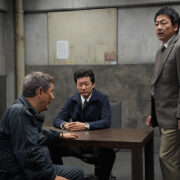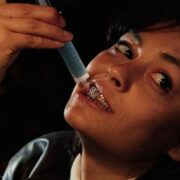PALINDROME: An Intriguing But Frustrating Misfire
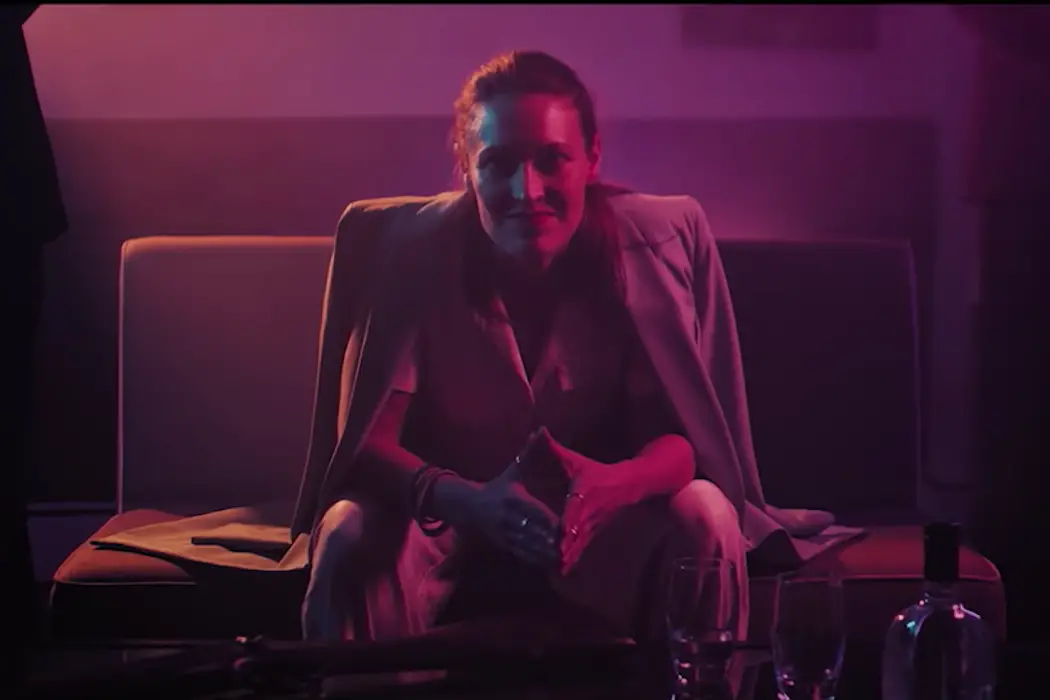
I used to work in politics but film has always…
With theaters closed across the globe, and the world slowly, tentatively poking its heads out from behind closed apartment doors, movies are still making their way, albeit in new and uncharted fashions. At the London Independent Film Festival (LIFF), dozens of features were introduced to the public just as it was ordered to retreat. One such film was Marcus Flemmings’ new feature Palindrome, a bifurcated meditation on self-consciousness and self-determination, which eludes narrative convention just as much as it eludes thematic coherence.
A Tortured Hero
Not without its enjoyable or thought-provoking elements (it won the Production Design prize at LIFF, as well as the “Best LGBTQ film” prize at the New York Cinematography Awards) that is, unfortunately, all Palindrome remains: interesting snapshots that fail to fully coalesce around a satisfying whole. The film is essentially two stories about lives unravelling. In the first story, Fred (Jumaane Brown) is stuck in a mental institution. His time there consists of confronting conversations and painful “treatments” with the cruel and mysterious Dr. Gladstone (Daniel Jordan), and dark plunges into his own subconscious where he meets eccentric characters that challenge and force him to figure out what he wants in life.
In the second, we follow Anna (Sarah Swain) on one particular day in her life, intercut with scenes of her and Terri (Hester Ruoff), a young actor and her recent girlfriend. The story is a nonlinear tragedy, cloaking Terri’s gruesome death just enough before tracing their relationship from the beginning. The one evening her storyline follows in real time is also her final day, and only one other person knows about it.
Fred and Anna’s stories intertwine in only a few moments, the first when Fred is first thrust into a deep, dark, sub-conscious state after electroshock therapy from Dr. Gladstone. He comes to some sort of awakening in an undisclosed location when he hears a phone ringing. On the other end of the line is Anna, who tells Fred that she is going to die at 11:01 pm.
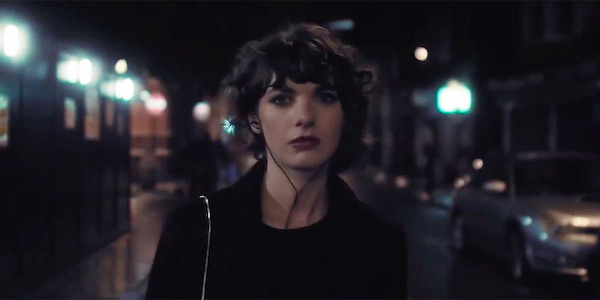
Fred commences a sub-conscious odyssey after his phone call with Anna, spurred on not only by an innate desire to save her, but also to find his own freedom. These nebulous goals are strung together by three distinct characters: Daniel, a young man in a suit who preaches about capitalism and ropes Fred into a robbery; an older, nameless, nihilistic man who challenges Fred’s idealism; and a young woman, Mary, who encourages it.
All three are less like characters than they are symbols, though what they represent exactly is an answer the film never confidently asks and fails to answer. Instead, they mouth off philosophical platitudes at Fred, both building up and chipping away at his sense of self. If there is one issue that binds these characters from being totally successful, it is an imbalance of tone. There is never a sense that the film knows when it wants to be funny or serious. The actors themselves make their characters as loud and expressive as possible, but their didactic dialogue only derails any sense of intention.
There is a particularly memorable scene after they rob a convenience store where Daniel lectures Fred on capitalism, colonialism, and the conditions for the order of the world. It’s an interesting bit of symbolism and probably the one point in the film that comes close to some thematic coherence. Fred, a black man, being lectured on the systems of Britain, about where in the world the oppressed belong, by Daniel, a white man. It’s a commendable long take, anchored by Daniel’s escalating rage and fits of calm. The conversation, however, doesn’t lead to anywhere concrete; the payoff is never fully illustrated, but it does offer a glimpse at some political perspective the film wants to convey.
Intersecting Lives
The film cuts to black immediately following a scene in which Daniel shoots Fred in the chest. We resume on Anna’s face, indelibly rendered on screen with severe, cat-eye sunglasses, red lipstick, and headphones curled around her ears. It’s 6:23 pm at an art gallery, and no one has bought her painting. Anna is preoccupied with herself; in flashbacks she meets Terri and we watch their relationship develop and unravel. The tragedy is quite obscure, bathed in pink and purple neon lights, As we get to know Terri, however, we learn that her drug dealing on the side has gotten her into some trouble, the extent of which we never learn until we stare at her mutilated, lifeless corpse nearly dead in the face next to a petrified Anna.
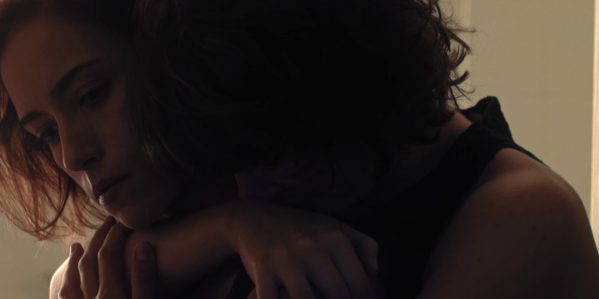
If this sounds like a spoiler, don’t worry. The film itself is less concerned with the content of specific events, and more interested in how they interact with each other in its scrambled timeline. Knowledge of Terri’s death, then, is inconsequential in a narrative sense, and more important as the context of Anna’s spiraling depression, one that rears its ugly head on the evening after the gallery showing. This day plods ominously towards 11:01 pm, tracked by timecards and split by flashbacks that spell out Anna’s own inevitable end.
The past and present are weaved together just as liberally in Anna’s story as fantasy and reality are in Fred’s. Anna’s last night is drawn out for dramatic effect. She takes a handful of pills, washes them down with copious amounts of liquor, and awaits her end. For one final symbolic flourish, we see the last flashback to Terri and Anna, on a date. Terri tells Anna that her name is a palindrome, the same forwards and backwards. It’s about as heavy handed as the rest of the film, but a convenient trigger for the film’s final sequence.
When Anna hits the floor and the clock reaches 11:01 pm, Fred is back on screen, lying on the ground in the same position Anna landed. In a flood of realization, he rushes back to the room where he picked up the phone at the beginning of the film and calls Anna back, only to realize he is too late to save her. He blames his stubbornness and selfishness, though there is little evidence those are the cause of the tragedy.
Frustrating Meanings
According to Dr. Gladstone, there are two types of people in the world; the first type, intelligent, identifies their limitations; the second, idealistic, will die trying to chase unfulfilled whims. It’s unclear where Fred, or even Anna, belongs within these classifications. We don’t know what Fred really wants beyond a vague notion of freedom; the film isn’t interested in those specifics, unfortunately. Dr. Gladstone’s theory is purposefully simplistic, and perhaps if there is a binding theme within Palindrome’s muddled ideas it is that his theory is fallible.
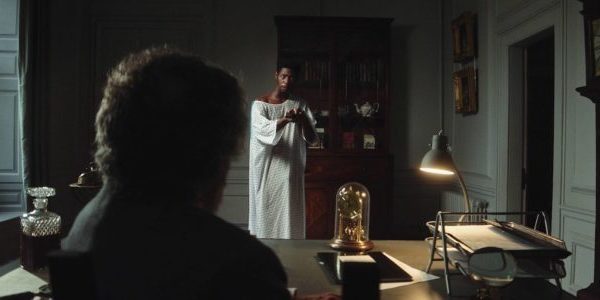
Fred is that ideologue, chasing nebulous dreams of freedom and absolution, yet he lives, while Anna seemingly succumbs to her limitations. Upon returning to consciousness, Fred confronts Gladstone in his office, newly confident, the maker of his own destiny. Just as Fred was thrust towards his destiny by a bullet, so does he realize it, taking out Gladstone in one final, violent act.
Palindrome: Conclusion
Palindrome’s thematic suggestions are confused, but its cinematic language is at least consistent with its aims, bookending its story with composer Billy Jupp’s captivating, original theme played forwards and backwards to mark Fred’s harrowing journey, like Anna’s, with the titular linguistic device. Palindrome’s high concept framework works against it. Fred’s storyline is convoluted, its narrative muddled by dialogue that talks at the audience rather than with it. And Anna’s story, while tragic, ultimately doesn’t challenge any preconceived notions about trauma and self-destruction. What it does suggest, though, sometimes powerfully, is the potential for the interconnectedness of disparate lives, and the fraught journey towards self-actualization.
What do you think? Does Palindrome‘s high concept framework work for or against its narrative?
Palindrome will be released on VOD on August 1, 2020.
Watch Palindrome
Does content like this matter to you?
Become a Member and support film journalism. Unlock access to all of Film Inquiry`s great articles. Join a community of like-minded readers who are passionate about cinema - get access to our private members Network, give back to independent filmmakers, and more.
I used to work in politics but film has always called to me. Now I'm putting my love of the art form to use! I love social thrillers, coming-of-age tearjerkers, and pitch black comedies. The Coen Brothers, Olivier Assayas, Ingmar Bergman, Kelly Reichardt, and Andrew Haigh speak to me on a spiritual level. Enjoy!




